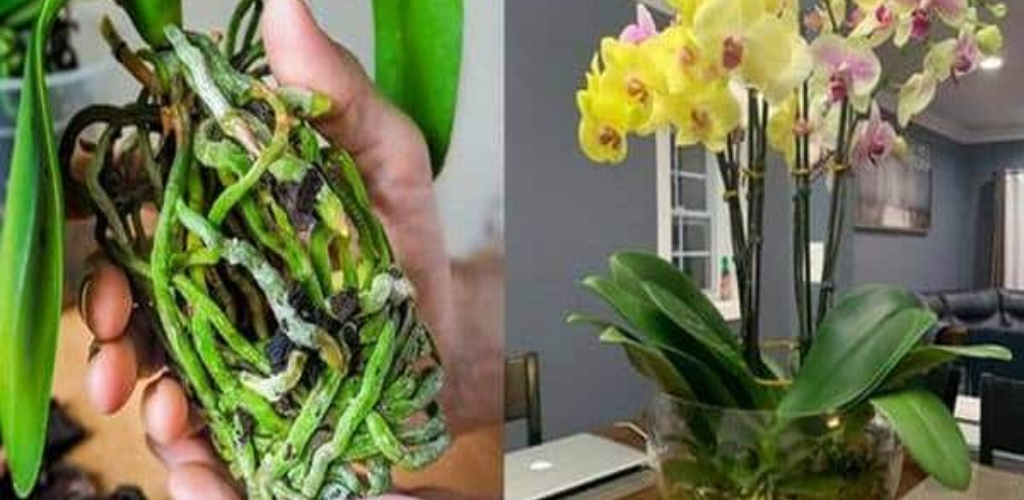Growing Orchids Without Land Using Hydroculture
It is possible to grow plants without soil. This is then replaced by a neutral substrate (clay balls, sand, horticultural felt, etc.), or even by water. This is called hydroponics or hydroculture. Besides, did you know that 70% of the tomatoes we eat out of season come from hydroponics?
Indeed, it is very simple and fun, at home, to see green plants grow without any addition of soil. How it works ?
Most orchids are epiphytes living in a “hanging” state. Hanging aerial roots to the bark of trees, they receive moisture from the air or streams of rainwater. They extract useful substances from dying layers and rotting leaves.
It is impossible to recreate a tropical climate in a residential building, but individual conditions can be brought closer to natural ones. In addition, the presence of a substrate is not the most important thing when keeping an orchid. Much more important to ensure uniform hydration, nutrition and air exchange of the roots.
There are many growing methods – in the cortex, on blocks, hydroponically and even bare root in a glass pot. The latter option is not known to many, but it is very interesting, so you should pay special attention to it.
The materials that are mainly used for this type of cultivation are undoubtedly expanded clay but you can also use perlite, classic gravel or sand. So many inert elements which provide nothing to plants in terms of food.
But they simply support the root system and help the plant grow vertically.
Next, we will need a pot without drainage holes in the bottom. It can also be a simple lid or a glass container. Next, we need the real vase, the pierced one.
You can use an old plastic pot to pierce the bottom, or the ricotta container.
The first thing to do is to remove the flower stems with disinfected and sterilized scissors used specifically for gardening and cut on the first node. This is because if we cut directly at the base, if it were to infect the wound, it would go straight to the crown of the plant. Instead, it will stop at the node.
Then we free the roots from the earth after removing it from the pot. At this point we will remove any roots that are not green or greenish. Now we plant in the new transparent pot with clay instead of soil. Once the racking is complete, we need to move on to the second vessel. Let’s put about 2cm of water then we can insert the first vase into the second.
In the following days, the water will reach the roots by capillary action, nourishing them.
Over time, the plant will adapt to its new home and the roots will no longer have a greenish color but will take on a whitish color.
The expanded material substrate does not provide the plant with the mineral salts or what it needs, which is why it is necessary to use a fertilizer to dissolve in water. It is preferable to use a specific one but also the universal one can be suitable, the important thing is to put a tenth of what is written on the packaging. Each time we water our plant it will therefore be essential to add fertilizer to the water.
